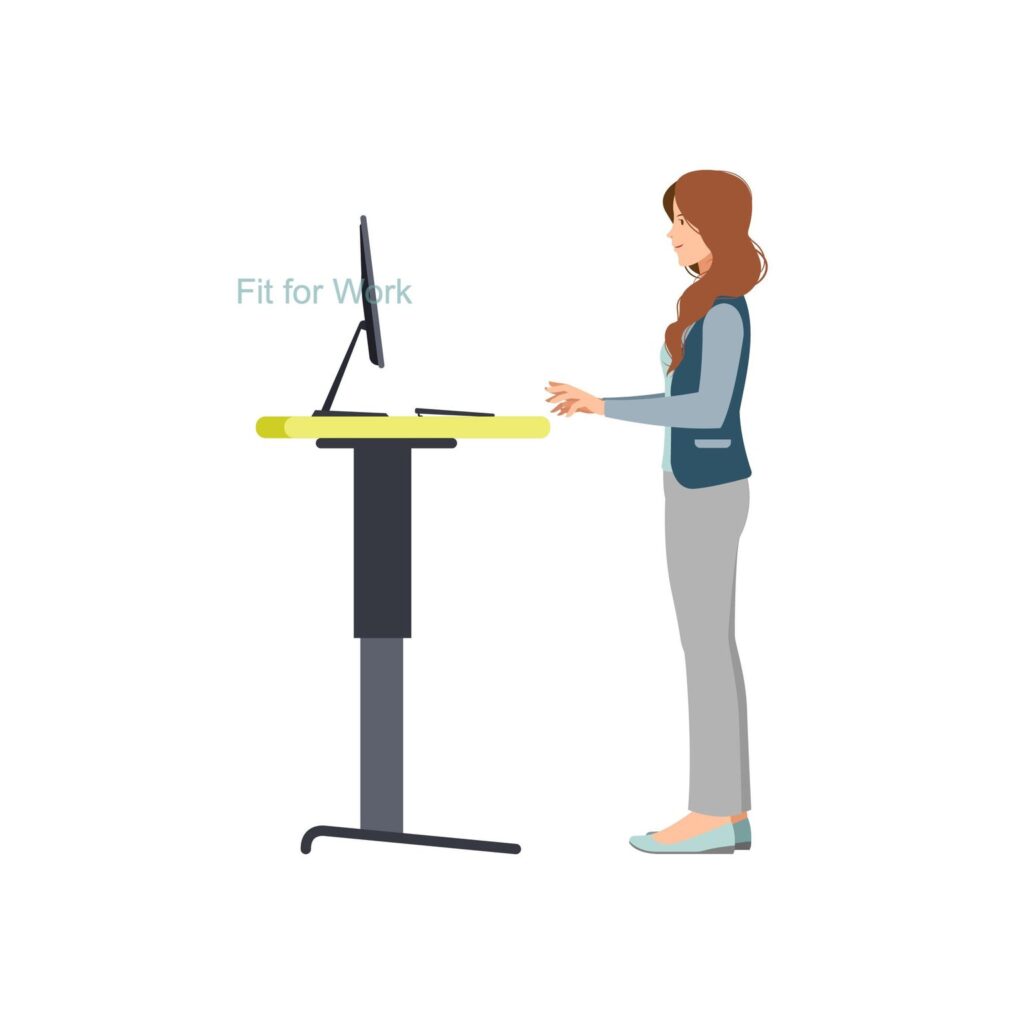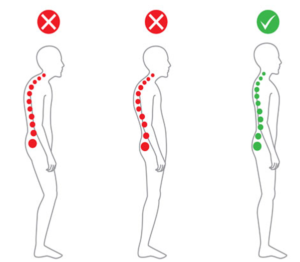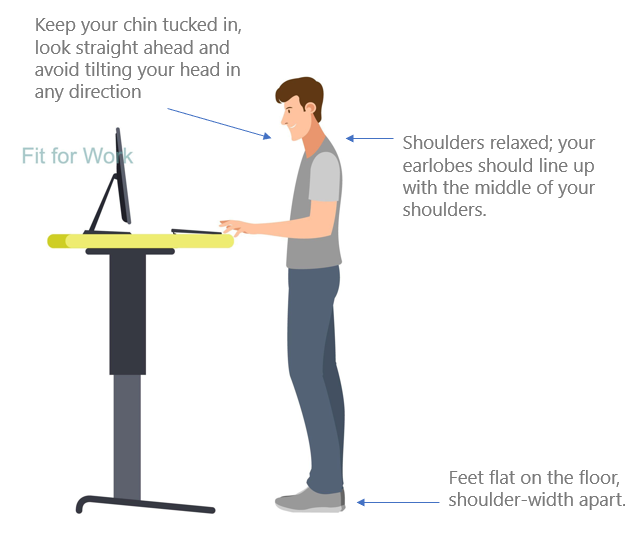Standing is something we do without much thought. For the most part, we don’t consciously think about how we stand. When you look around at others, I’m sure you’ll agree that not everyone stands quite the same. There is a right and wrong way to stand as you work! This is important to think about for anyone who stands while working; whether you have access to a standing desk, or, you have created a temporary standing solution in your home office. It is important to consider that how you stand could be making a big difference to how you feel.
STANDING AND POSTURE
First of all, we are not designed to stay in any posture for prolonged periods, and this goes for standing also. Static standing creates a larger strain for the body, compared with sitting. When standing static you will only weight bear through your feet. This is not necessarily a negative, as weight-bearing is important for our joints. However, it is important to factor this in when deciding how long to stand for. In sitting, we weight bear through multiple areas including the seat, armrest, backrest and the feet.
Habits such as standing with one foot raised, leaning forward or back are all examples of poor posture. If you stand with one foot raised and are leaning, you are putting more pressure on the joints in your back, in this scenario, a supported sitting posture would be favorable.
WHAT SHOULD STANDING LOOK LIKE?
When we discuss posture, we are referring to alignment. This means the alignment of each joint relative to one another. Ideal standing posture at your desk looks like this;
TIPS FOR STANDING
- Stand up tall!
- Keep your shoulders back and relaxed
- Wear comfortable shoes
- Aim to keep your weight over your feet equally
- Avoid locking your knees
- Tuck your chin in
If you plan to start using a standing work station, consider gradually increasing the amount of time you spend standing. Start off with very short intervals- just a few minutes. If you notice any discomfort or that you can no longer stand with upright posture, it’s time to sit down. Your standing time can gradually be increased over time. This allows your body time to adjust to your new working posture. Do remember that standing is also a still posture- it doesn’t compensate for movement.
STANDING AND YOUR WORKSTATION
Remember that if your workstation is not ergonomically set up for you, this may be causing you to adapt an awkward standing posture. Ensure your desk is at the right height and keyboard in the correct location. Check that hands rest just over the keyboard when your elbows are close to your body and at 90 degrees. Check your monitor; you should be comfortably looking at the top third of your screen when looking straight ahead. Your monitor should be one arm’s length away from you.
DON’T FORGET TO MOVE!!
Your next posture is the best posture. Ensure you move around very frequently throughout the day. Take some small walks around the office or carry out some desk exercises.
ERGONOMICS SUPPORT FOR YOUR COMPANY
Fit For Work provide a range of ergonomics services which are suitable for those working from home/remotely or those who are office based. To learn more about office setup and good ergonomics principles, you can reach out to Fit for Work to talk about how an ergonomic programme within your office can increase productivity, increase staff satisfaction, improve staff retention and reduce sick leave.






